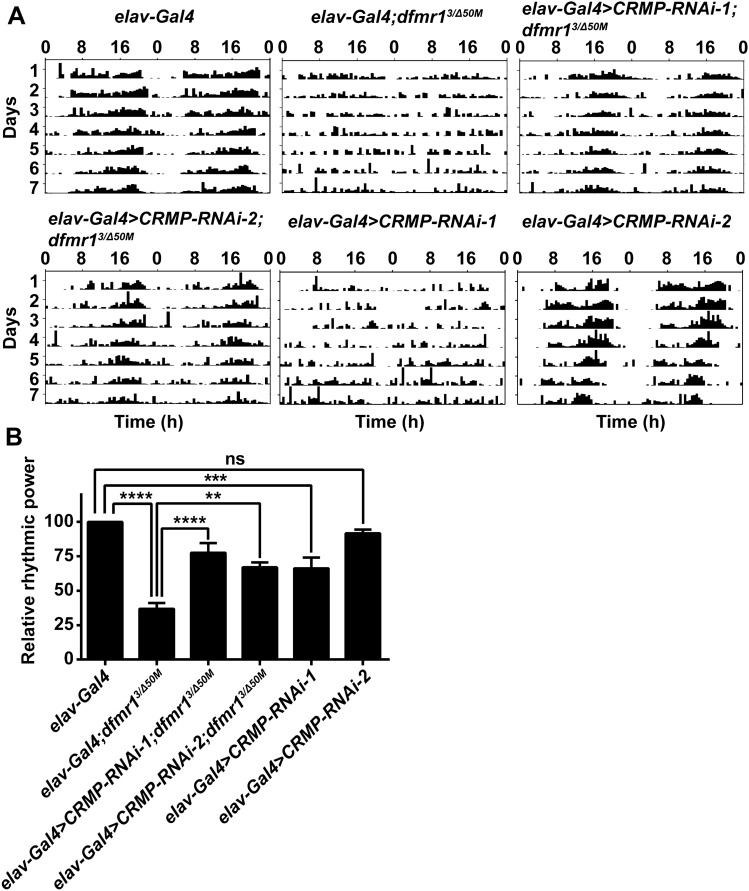Fig. 1.
Knockdown of CRMP in the central nervous system rescues circadian locomotor activity defects in dfmr1 mutants. A Representative actograms from flies of the indicated genotypes. dfmr1 mutants show significant defects of circadian locomotor activity compared to wild-type controls, while knockdown of CRMP partially ameliorates the arrhythmic patterns. Flies loaded in the monitors were entrained to an LD cycle for 4 days and their locomotor activity in constant darkness was recorded for 7 days and analyzed for the rhythmicity of individual flies. B Relative rhythmic power of the genotypes displayed in A. The dfmr1 mutant flies dfmr13/dfmr1Δ50M was shorted to dfmr13/Δ50M. dfmr1 mutants with both CRMP RNAi transgenes driven by elav-Gal4 show significant improvement in circadian locomotor activity relative to dfmr1 mutants. Some of CRMP-RNAi-1 transgene flies display arrhythmic activity the others show no circadian defects. **P <0.01, ***P <0.001, ****P <0.0001, one-way ANOVA. n >50 flies per genotype. Data are shown as the mean ± SEM. ns, not significant.

